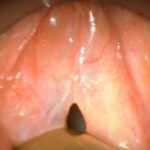Post-operative nausea and vomiting (PONV) are among the most common complications following anesthesia and surgery, affecting up to 30% of the general surgical population and up to 80% of high-risk patients. Beyond patient discomfort, PONV can lead to delayed recovery, unanticipated hospital admissions, and increased healthcare costs. An evidence-based, multimodal approach is essential for effective prevention and improved post-operative outcomes.

Understanding PONV: Pathophysiology and Mechanisms
PONV results from stimulation of the vomiting center in the medulla oblongata, influenced by input from multiple sources:
- Chemoreceptor Trigger Zone (CTZ) in the area postrema
- Vestibular system (particularly relevant in motion-sensitive individuals)
- Vagal afferents from the gastrointestinal tract
- Higher cortical centers, particularly in anxious or stressed patients
Neurotransmitters involved:
- Dopamine (D2 receptors)
- Serotonin (5-HT3 receptors)
- Histamine (H1 receptors)
- Acetylcholine (muscarinic receptors)
- Substance P (NK1 receptors)
Identifying High-Risk Patients for PONV
Utilization of validated risk assessment tools enables individualized prophylactic strategies. The Apfel Simplified Risk Score is widely accepted and includes the following predictors:
- Female gender
- Non-smoking status
- History of PONV or motion sickness
- Post-operative opioid use
Risk Stratification and Incidence:
- 0 risk factors: ~10%
- 1 risk factor: ~20%
- 2 risk factors: ~40%
- 3 risk factors: ~60%
- 4 risk factors: ~80%
Pharmacologic Strategies for PONV Prevention
5-HT3 Receptor Antagonists
Examples: Ondansetron, Granisetron, Palonosetron
- Most commonly used class of antiemetics
- Effective when administered near the end of surgery
- Palonosetron offers prolonged action with a single dose
NK1 Receptor Antagonists
Example: Aprepitant
- Blocks substance P at NK1 receptors
- Administered orally before anesthesia
- Effective in high-risk patients and in combination therapies
Dopamine Antagonists
Examples: Droperidol, Haloperidol
- Administered in low doses to avoid extrapyramidal side effects
- Especially useful in moderate to high-risk patients
Antihistamines and Anticholinergics
Examples: Diphenhydramine (H1), Scopolamine (muscarinic)
- Scopolamine patch is effective in patients with high baseline risk, especially in prolonged procedures
- Administered preoperatively
Corticosteroids
Example: Dexamethasone
- 4–8 mg IV at induction significantly reduces PONV
- Synergistic when combined with 5-HT3 antagonists
Multimodal PONV Prophylaxis Protocols
Combining agents with different mechanisms of action is more effective than monotherapy. Recommended regimens are based on risk stratification:
Low Risk (0–1 Factor):
- No routine prophylaxis
- Rescue treatment if symptoms occur
Moderate Risk (2 Factors):
- Dual therapy: Ondansetron + Dexamethasone
High Risk (≥3 Factors):
- Triple therapy: 5-HT3 antagonist + Dexamethasone + NK1 antagonist or Scopolamine
- Consider regional anesthesia to minimize systemic opioid use
Non-Pharmacologic Interventions to Reduce PONV
1. Minimizing Opioid Use
- Employ opioid-sparing techniques such as regional anesthesia, NSAIDs, acetaminophen, or local infiltration analgesia
2. Adequate Hydration
- Perioperative dehydration increases PONV risk
- Maintain euvolemia with IV fluids before and during surgery
3. Anesthesia Type and Agents
- Use propofol-based TIVA (Total Intravenous Anesthesia) rather than inhalational agents
- Avoid nitrous oxide when possible
4. Supplemental Oxygen
- Administration of high FiO₂ during and after surgery may reduce PONV, particularly in abdominal surgeries
5. Acupuncture and Acupressure
- Stimulation of P6 (Neiguan) point on the wrist shown to reduce nausea in several clinical trials
- Can be used adjunctively in high-risk populations
Timing and Dosing of Antiemetics
| Drug | Dose | Timing |
|---|---|---|
| Ondansetron | 4 mg IV | End of surgery |
| Dexamethasone | 4–8 mg IV | At induction |
| Aprepitant | 40 mg oral | 1–3 hours before anesthesia |
| Scopolamine Patch | 1.5 mg transdermal | Night before or 2 hours prior |
| Droperidol | 0.625–1.25 mg IV | End of surgery |
Postoperative Monitoring and Rescue Therapy
Patients should be monitored in the post-anesthesia care unit (PACU) for signs of nausea and vomiting. If PONV occurs despite prophylaxis, rescue therapy should involve a different class of antiemetic than was used for prevention.
Rescue Options:
- Haloperidol (if not used prophylactically)
- Promethazine
- Metoclopramide
Avoid repeating the same agents that failed in prophylaxis due to reduced efficacy.
Special Populations and Considerations
Pediatric Patients
- Ondansetron (0.1 mg/kg up to 4 mg) and dexamethasone (0.1–0.2 mg/kg) are effective
- Avoid dopamine antagonists due to risk of extrapyramidal symptoms
Obstetric Surgery
- High incidence of PONV, especially during cesarean delivery under general anesthesia
- Prophylactic 5-HT3 antagonists and dexamethasone are routinely used
Ambulatory Surgery
- Effective PONV control is essential for early discharge
- Emphasize rapid-onset, short-duration antiemetics
Preventing post-operative nausea and vomiting requires a systematic, evidence-based approach combining pharmacologic and non-pharmacologic interventions tailored to individual risk factors. Utilizing multimodal prophylaxis, optimizing anesthetic techniques, and ensuring vigilant post-operative monitoring significantly enhance patient outcomes, comfort, and recovery timelines.

